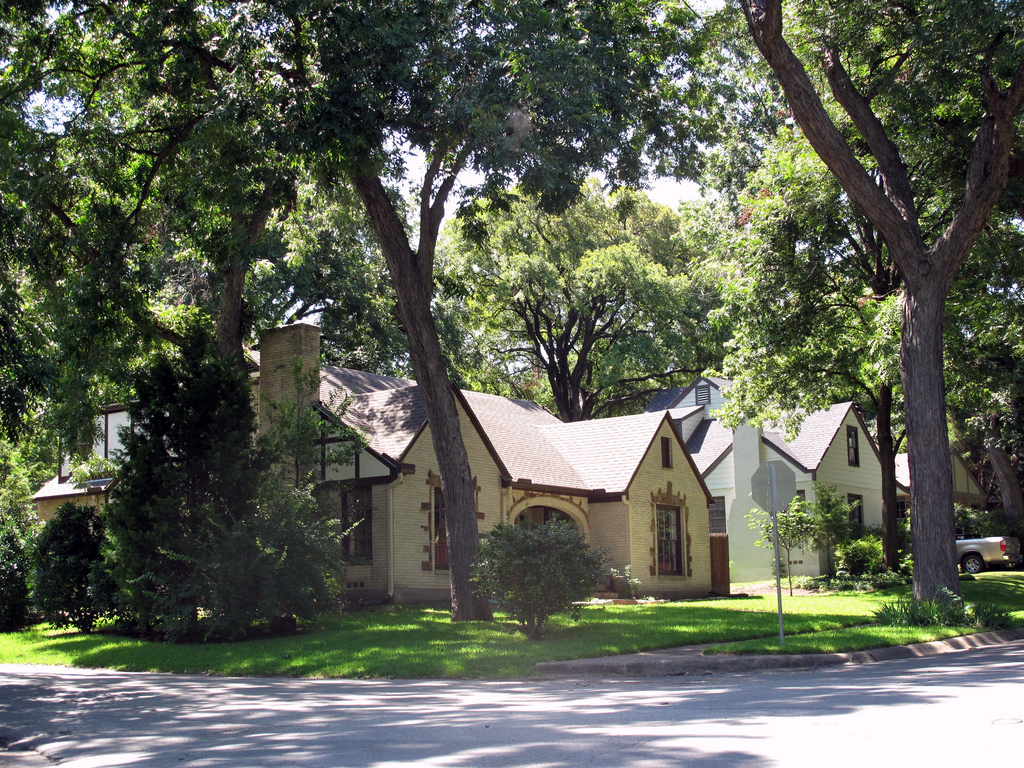
Keep the heat off your house.
Just like you, your house has a heat limit. Scorching summer days can take a toll on the building's paint, wood, foundation, and roof. A house scarred by heat damage will go down in value which is bad if you want to keep it long-term. A drop in equity is especially damaging if you're hoping to sell your house fast.
Hot weather isn't the most obvious threat you might think of—not like hail or termites, but high heat can do a lot of damage.
Your house is an investment. You've put time, sweat, and money into making it beautiful. But mother nature can easily take all of that away if you're not careful.
The Dallas/Fort Worth Metroplex has a long history of high temperatures. Since 1914, the hottest days in the metroplex have often been over 100 degrees. The record temperature in 108 years was 112 degrees Fahrenheit on a day in 2018.
But how do you even protect a house from the sun? It’s the sun, there's no escaping it. However, there are things you can do to help your house make it through a scorching summer unscathed.
We pay cash for houses in Fort Worth, but we also like to share helpful information with homeowners hoping to protect the investment in their houses.
We’ll explain how high heat and humidity can damage your house, and we'll give you a few tips to help you protect your home.
What does heat do to houses?
Heat damage on a home isn't obvious until it is. Imagine a piece of wood left outside in the hot sun for months without any break in the shade.It looks like just a regular piece of wood, but you'll start to notice changes over time. For example, it may begin to look discolored.
Also, it may look warped, like it was forcefully bent into a different position permanently. That board is your house.
That discoloration and other physical changes will take hold in your house if you don't take precautions against the heat.
Here are 3 ways hot summer days can damage your house:
- Wood damage – According to The Goodhart Group, excessive heat from the sun will dry out the wooden parts of your house like your deck, shutters, and siding. It can make the wood look discolored, and if you've painted it, the paint might crack or peel.
- Roof damage – Your roof is the most exposed part of your house. It will take sun beams head-on throughout the hot months, and that can cause blistering and cracking—especially if your roof is made of asphalt shingles. In addition, attics are usually the hottest part of the house (heat rises), so they are often the most humid part of homes. High humidity is another threat you may not think of right away, but it's a serious problem to avoid. A buildup of heat and moisture under your roof makes your shingles deteriorate faster. If your shingles are cracked after a barrage of high temperatures, leaks can open up in your roof, possibly leading to severe structural damage.
- Foundation damage – Your foundation is probably one of the most overlooked parts of your house, especially when it comes to heat damage. The soil supports a house's foundation. However, when the days get hot, the soil shrinks as the moisture inside it evaporates. The shrinking soil can cause the foundation to shift, leading to damage and expensive repairs.
How to protect your house
Look at the siding on your house and other surfaces you might have painted. Is the paint peeling, bubbling, or flaking? If it is, you've probably got some heat damage.You can fix that so that it looks nicer and the same damage is less likely to happen again. Try repainting those surfaces with elastomeric paint.
This type of paint puts up a barrier to protect surfaces from moisture that will evaporate during hot days.
Next, you can apply a protective coating to wood surfaces outside your house to prevent sun damage. Look for a good product with a strong reputation and apply it according to the directions.
You can also apply a protective coating to your roof and install vapor barriers. And remember to make regular maintenance checks to ensure your roof is in good shape.
Preventing heat-related foundation problems takes a little more imagination and effort. The problem is that the sun could make the moisture in the soil surrounding your foundation evaporate, making the soil shrink and maybe shift under your house.
Preventing heat-related foundation problems takes a little more imagination and effort. The problem is that the sun could make the moisture in the soil surrounding your foundation evaporate, making the soil shrink and maybe shift under your house.
Large trees can also pull moisture away from the soil under your house. You can avoid that problem by making sure there are no large trees too close to the house.
We can help too!
If you already have a house with obvious signs of heat damage and don't want to deal with the repairs, sell it to us! We buy houses in Fort Worth "as is."Don't worry about how the siding looks or if the roof has cracks. We don't need you to make any repairs. Just give us a call, and we can schedule a free, no-obligation consultation. Then, you could sell your house to We Buy Ugly Houses® Fort Worth and enjoy peace of mind.
Call We Buy Ugly Houses at 866-200-6475


